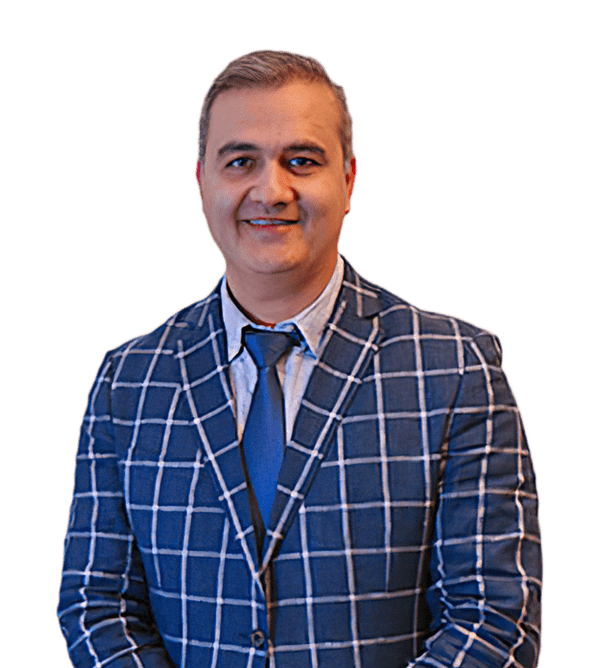Ear Surgery in Iran; All You Need to Know
Ear Surgery in Iran, alternatively referred to as otoplasty, which is also called ear pinning surgery (pinnaplasty), is a method of permanently changing the shape, position, or size of the ear. If your ears are too big and prominent, you can have cosmetic and plastic surgery. Also, if a person’s ear or ears are broken due to an injury or congenital disability, these people are candidates for otoplasty surgery. After sufficient growth of the earlobe, usually after five years to adulthood, this surgery can be performed. In some cases, Ear Surgery in Iran is also performed from the beginning of 3 years.
In some cases, ear deformity surgeries should be performed at a younger age, but the proper age for loop ear disorder or protruding ears is between 6 and 12 years old. Stay with us to learn more about this type of ear cosmetic surgery, the cost of ear surgery in Iran, and many more. Ear reshaping or otoplasty is a relatively standard cosmetic procedure that can focus on various aesthetic concerns related to the ears. Typically, the ordinary purposes for considering otoplasty include:
- Correcting prominent or protruding ears.
- Addressing ear asymmetry.
- Reducing the size of overly large ears.
- Reshaping misshapen ears.
Countless reasons make Iran the top destination when considering numerous cosmetic procedures such as ear reshaping in Iran, and more information on this topic will be presented in the following lines on the Avamedi website.
What is Ear Surgery (Otoplasty)?
Ear Surgery in Iran, or otoplasty, is ear cosmetic surgery performed on the outer ear (lobe). The earlobe consists of folds of cartilage that are covered with skin. The formation of the outer ear begins in the fetal period and continues until the years after birth. If the earlobe does not grow properly, you can do otoplasty and modify the size, placement, and shape of the ears. Ear reshaping surgery can change the life of a child or an adult who is ridiculed by others. Some people have Ear Surgery in Iran because they want to correct the structural abnormality of the ear. Some others choose Ear Surgery in Iran because they have protruding ears, and they are bothered by how far their ear is from their head and is more prominent than average. Sometimes, the ears are more extensive than usual compared to the head.
Cost of Otoplasty in Iran
The cost of otoplasty in Iran typically aligns with the range of 1,500 to 2,500 USD, just like most other surgical procedures that are much more affordable in Iran than in other countries. The final ear reshaping in Iran usually varies depending on factors such as the clinical or hospital conditions, the type of cosmetic procedure used, the complexity of the procedure, the amount of changes applied, and the skill of the surgeon. Of course, in addition to the costs of the operation, you need to budget separately for tests, anesthesia, and prescription drugs. Regarding ear reshaping in Iran, It is crucial to seek details regarding the overall expenses associated with otoplasty. Feel free to get in touch with us for any questions or support. Avamedi Health Group can offer ongoing support and guidance as your dedicated companion every step of the way.
What is Otoplasty Surgery and What Does it Fix?
Otoplasty, also known as ear reshaping, is a type of cosmetic surgery that is primarily concerned with changing the size, position, or shape of the ear. Some people choose otoplasty to correct the structural abnormality of the ear due to injury or congenital defect. Others seek this method because their ears are too big, small, or protruding. Otoplasty can be performed at any age after the ears reach their full size, that is, from 5 years of age onwards.
If a child is born with protruding ears or other ear problems, splinting may successfully correct these problems and prevent ear reshaping in the future. Otoplasty can fix a wide range of issues. For example, it can help in correcting deformities and ear problems. One of the frequently cited factors people consider Ear Surgery in Iran is to improve the appearance of their ears. Ear reshaping or otoplasty is performed to treat a number of deformities such as folded, protruding, “cauliflower,” and large or too-small ears.
Ear reshaping surgery can provide many psychological and physical benefits to people with ear problems. The choice of surgical technique is contingent upon the individual’s needs, goals, desires, and the favored outcome.
Types of Otoplasty in Iran
Essentially, otoplasty in Iran is often referred to as cosmetic Ear Surgery in Iran. It deals with the visible or outer parts of the ear. The ear comprises intricate cartilage structures covered by a layer of skin. This unique structure starts its growth process before birth and continues to develop in the years following. In situations where the ear’s natural development, particularly the auricle (or the external part of the ear), doesn’t occur as desired, individuals might opt for cosmetic Ear Surgery in Iran to address issues related to size, positioning, or shape. Otoplasty offers a transformative solution, allowing individuals to sculpt their ears to match their ideal aesthetic. There are typically three different types of otoplasty in Iran, which include Ear pinning, Ear augmentation, and Ear reduction. These types of ear reshaping are all functional and beneficial for individuals and are favored by many. They will be thoroughly discussed in the following lines.
- Ear Pinning In Iran: Ear pinning, otherwise called setback otoplasty or otoplasty for prominent or protruding ears, is a surgical procedure that is performed to bring the ears closer to the head. It is actually performed on people whose ears protrude prominently from the sides of their heads. The cost of protruding Ear Surgery in Iran largely depends on the initial size of the ear. In ear pinning surgery, usually, the surgeon makes an incision behind the ear, in the natural crease where the ear meets the head. By way of this incision, the surgeon attains entry to the cartilage of the ear. Afterward, the cartilage is reshaped and repositioned to create a more natural contour and make the ears closer to the head. Then, the surgeon uses sutures to secure the modified cartilage in place, granting the ear to sustain its new position.
- Ear Augmentation In Iran: Ear augmentation is a cosmetic procedure aimed at enhancing the appearance or size of the ears. The procedure is typically carried out to deal with problems such as small, underdeveloped, or asymmetrical ears. Ear augmentation allows for the formation of a more balanced and proportionate look by increasing the size or changing the shape of the ears. Some people may have small ears or ears that are not fully developed. In these cases, they may consider ear cosmetic surgery to increase the size of the external part of their ear. Ear augmentation may encompass reshaping the cartilage of the outer ear In pursuit of the sought-after size or contour.
- Ear Reduction In Iran: Ear reduction surgery is a surgical procedure performed to reduce the size or reshape the ears. It is frequently performed to alleviate issues like overly large ears, protruding ears, or asymmetrical ears. Excessive growth of the earlobe makes the size of the ears appear larger. People with microtia may undergo big ear cosmetic surgery to reduce the size of their ears. Throughout ear reduction surgery, the surgeon commonly makes incisions behind the ear or within the natural creases of the ear. Via these incisions, the cartilage and tissue of the ear are diligently reshaped and repositioned to attain the desired size and contour. Excessive skin may also be removed if deemed necessary. Subsequently, sutures are then used to secure the reshaped cartilage and close the incisions.
Ear Surgery (Otoplasty) Procedure in Iran
Ear surgery or otoplasty in Iran is a procedure that is performed to apply external changes to the structure of the outer ear and earlobe. This cosmetic surgery can be performed in different ways and can cause changes in both the position of the ear and its size. Additionally, it is effective in cases when the ear has problems due to congenital reasons or injury. In order to make the individual feel comfortable and have a smooth surgery, anesthetic drugs are used.
For people who suffer from this condition due to genetic and congenital reasons, it is better to undergo ear reshaping after they turn five years old. Ear reshaping must be performed by an expert, skilled, and experienced surgeon so that the individual is not harmed in any way and the problems are solved correctly. Ear otoplasty in Iran is usually used to solve problems such as deformities of the earlobe, restore appearance disorders, and bring the earlobe closer to the head.
Otoplasty in Iran may be performed in different ways. Usually, the surgeon chooses surgical techniques based on the shape and type of a person’s ear. In fact, the surgeon chooses the incisions and their place based on ear problems. First, it should be determined what necessary changes should be applied and what the individual’s goals, desires, and favorable outcomes are. Then, according to these two factors, the place of the incisions and the surgical method should be decided. These incisions may be made behind the ear or inside the ear.
The ear reshaping in Iran is commonly performed under general anesthesia. In this surgical method, the person’s own cartilage is used to shape the ear. In this method, excess pieces of skin or cartilage are removed, and changes are made to shape the ear. If the ear canal is also closed, it is opened by making incisions to restore the auditory pathway and improve hearing. If necessary, the removed cartilage is transplanted elsewhere in the ear. In the end, the surgeon should put the ear in its new position and fix it with sutures. It is better to use absorbable sutures for suturing the ears. These sutures are utterly compatible with the body and are absorbed by the body after the patient recovers. It takes about 2 hours to perform the ear reshaping surgery.
Otoplasty in Iran Recovery
After ear reshaping surgery, the ears are bandaged. This dressing is used to protect the ears and the skin around it. Sterile gauze is also placed around each ear to prevent applying pressure on the treatment area. This dressing remains intact for several days. As for ear reshaping in Iran, the best ear reshaping surgeons in Iran recommend that individuals take a week off from work or school to have a faster, safer, and better recovery period, which can lead to achieving the best results.
Furthermore, one of the most crucial factors in the recovery period is following the post-operative instructions and your surgeon’s recommendations and advice. This surgery is a cosmetic procedure that an experienced and skilled surgeon should perform. When considering ear reshaping in Iran, you should choose a surgeon who has a high level of knowledge about ear anatomy and has a lot of experience in the field of otoplasty surgery.
The ultimate goal of choosing the top surgeon is to help the individual regain self-confidence and enjoy the appearance of their ears when looking at themselves in the mirror. This is precisely why it is essential to get in touch with a top-tier healthcare provider in Iran. They can grant you a complimentary consultation and furnish you with in-depth details about every aspect of your surgery. Considering this, it would be optimal to contact the exceptional team at Avamedi, who will be your unwavering companion and guide you throughout your medical journey with unparalleled expertise and attentive support.
Ear Surgery in Iran Results
As mentioned, there are several ways to perform ear reshaping in Iran. In these methods, there are differences in the incision place and the purpose of the operation. Generally, permanent results are obtained from ear reshaping in Iran. Permanent results are not obtained from otoplasty in Iran, only in cases where the necessary changes have not been made. In such a situation, the surgeon’s lack of skill leads to not achieving permanent results. Therefore, if the surgeon has a high level of expertise, skill, and proficiency, the changes made will remain forever, and there is no need for another surgery.
If the patient does not follow the necessary instructions after the surgery, they may have problems and complications, and there could be a potential need for a subsequent surgery. Therefore, when considering ear reshaping in Iran, the individual should be cautious in choosing a qualified surgeon and following the imperative tips.
Click for more information about: Ear surgery for hearing loss
Conclusion
In conclusion, ear reshaping surgery, also known as otoplasty or ear pinning surgery, is a cosmetic procedure that can permanently change the shape, position, or size of the ear. Typically, it is performed to correct prominent or protruding ears, address asymmetry, and reduce the size of overly large ears. Ear reshaping in Iran can be performed on both children and adults. Ear reshaping in Iran is a popular option for individuals who seek ear reshaping surgery due to its cost-benefit compared to other countries.
There are different types of ear reshaping procedures, including ear pinning, ear augmentation, and ear reduction, each serving specific aesthetic purposes. In general, ear reshaping in Iran can provide remarkable psychological and physical benefits to individuals with ear-related concerns and issues. Otoplasty in Iran is typically performed under general anesthesia, and the surgeon chooses the proper technique according to the individual’s ear shape and goals. Recovery entails wearing dressings and following post-operative instructions for elevated healing.
It is crucial to choose an experienced surgeon with expertise in otoplasty for successful, affluent, and permanent results. When considering ear reshaping in Iran, it is recommended to consult with top-tier healthcare providers. It is highly advisable to get in touch with Avamedi, who can provide comprehensive information and support throughout the medical journey. Permanent results can be achieved with adept surgery, but following post-operative care instructions is indispensable to avoid complications and the necessity for further surgeries.
Source: NHS
Updated and Reviewed by Hesam.M (September 24th, 2024)
















